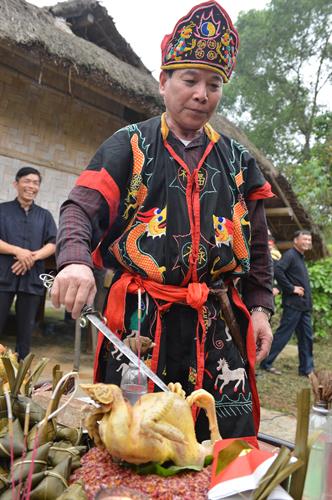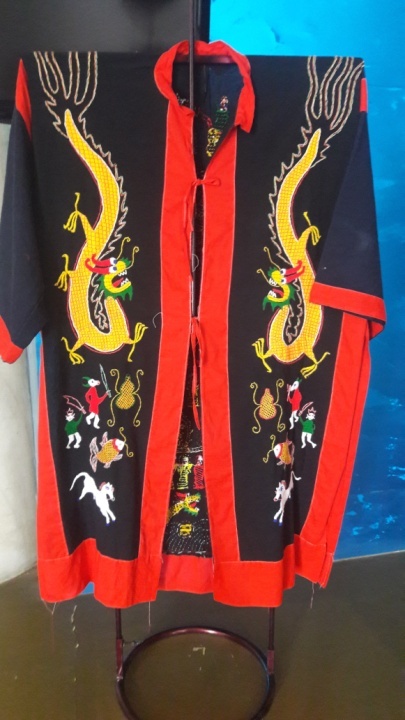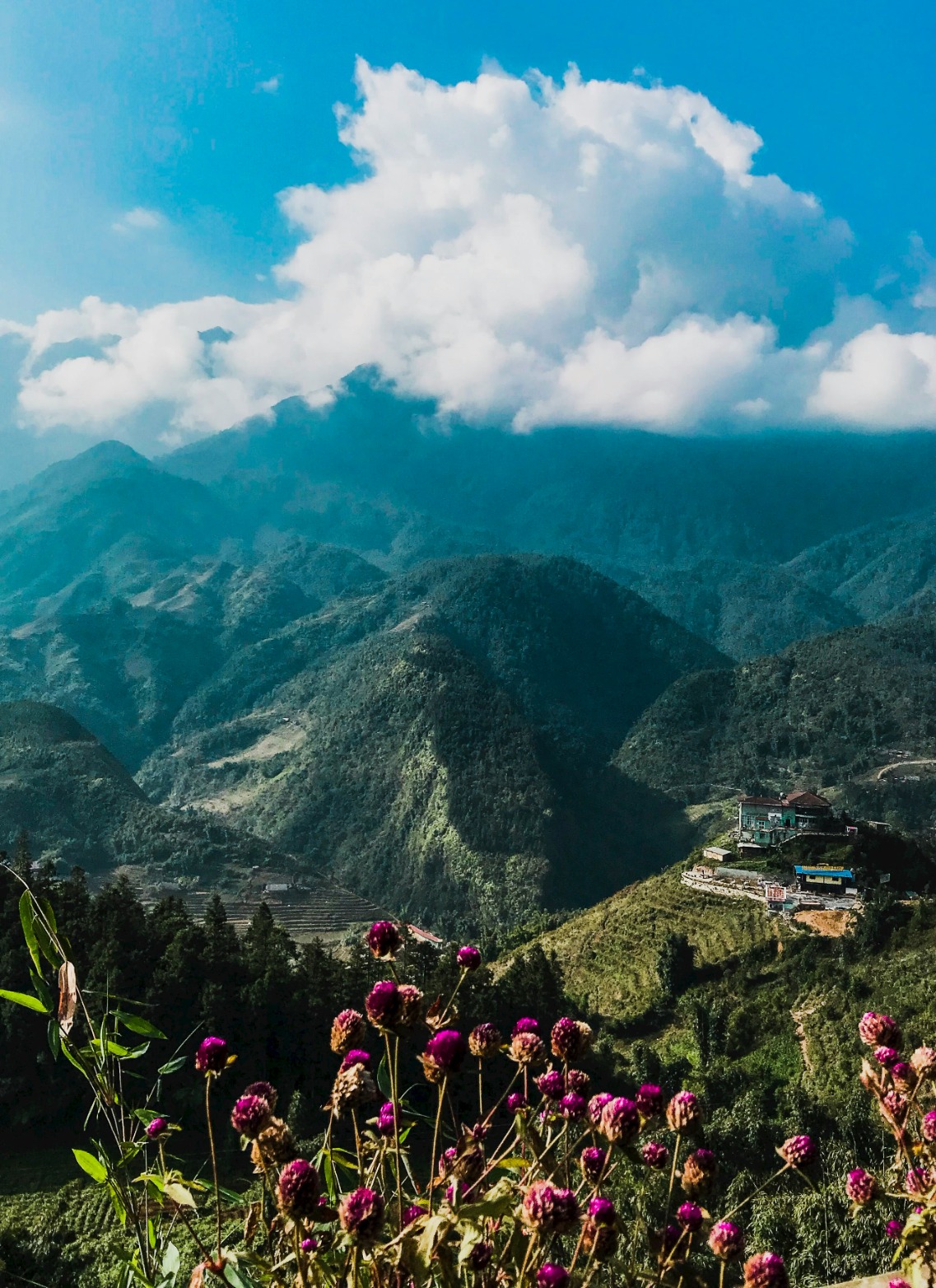The Cao Lan Ethnic Group and Their Shaman’s Costume Displayed at Hung Vuong Museum
The Cao Lan ethnic group is one of 21 ethnic groups living in Phu Tho Province and one of the four largest ethnic groups, alongside the Kinh, Muong, and Dao. The Cao Lan people mainly reside in Thanh Son, Yen Lap, Doan Hung, Ha Hoa, Cam Khe, and Thanh Ba districts, with the largest population concentrated in Doan Hung District.
Today, the economic and social life of the Cao Lan people has improved significantly compared to the past. However, for the Cao Lan people in particular and other ethnic minorities in general, the shaman still holds an important role in their lives. Over time, the everyday traditional attire of the Cao Lan people has changed considerably, but the shaman's costume has retained its original beauty.
.jpg)
The Shaman’s Costume of the Cao Lan Ethnic Group
The shaman’s costume includes a tunic, pants, hat, staff, horn, and rubber sandals. The shaman wears a pair of tunics: an inner white tunic, shorter than the outer one, which is crafted in a traditional style with buttons and pockets on both sides. The outer tunic is intricately designed with elaborate sewing and embroidered patterns, typically black or indigo, extending below the knees.
The neckline is a seam that runs vertically from top to bottom, often embroidered with red thread. The body of the tunic is decorated with images of dragons, figures holding swords, fish, and horses. The sleeves are wide, tapering downward to the hem, with the cuffs embroidered with red and yellow threads. The pants match the tunic in color, featuring wide legs and a long crotch reaching the knees. The cuffs extend to cover the feet.
The hat is conical, pointing upwards, with a black or indigo base. Its edges are embroidered with yellow and red threads for durability, while the body of the hat features colorful embroidery.
Shaman’s Tunic Displayed at Hung Vuong Museum
The traditional attire of the Cao Lan shaman displayed at Hung Vuong Museum offers insights into the ancient craft of cotton growing, weaving, and indigo dyeing of the Cao Lan people.
In the past, when cotton ripened, villagers harvested it, dried it, and separated the seeds. The cotton was fluffed, rolled into coils, and spun into fine threads. The threads were then boiled with rice for firmness and sheen, dried, and wound onto spools for weaving into cloth. The woven fabric was typically 40–50 cm wide, with lengths varying based on usage. Instead of white fabric, the Cao Lan people often dyed their cloth with indigo and other natural additives.
Indigo plants, grown between January and February and harvested from July to August, were soaked in water for 1–3 days. Once the water turned dark blue, it was mixed with slaked lime and ash to produce indigo dye. The fabric was soaked multiple times to achieve a deep, durable blue-black color.
.jpg)
Cultural Significance of Shamans
Shamans play a vital role in nearly every aspect of Cao Lan life, including childbirth, weddings, funerals, Tet celebrations, village festivals, and illness treatment. Through shamans, people express their hopes and prayers to the deities for favorable weather, prosperity, and peaceful lives. In some ethnic groups, shamans also serve as healers or exorcists.
Preserving the Cultural Heritage
In modern times, as society advances, the traditional attire of the Cao Lan people has gradually faded. However, the shaman’s costume remains preserved, maintaining its cultural and historical significance and showcasing the meticulous craftsmanship of the Cao Lan people in the ancestral land of Phu Tho.
Nguyen Thi Bich Vien
Hung Vuong Museum
 VIE
VIE



 Đoan Hùng
Đoan Hùng
